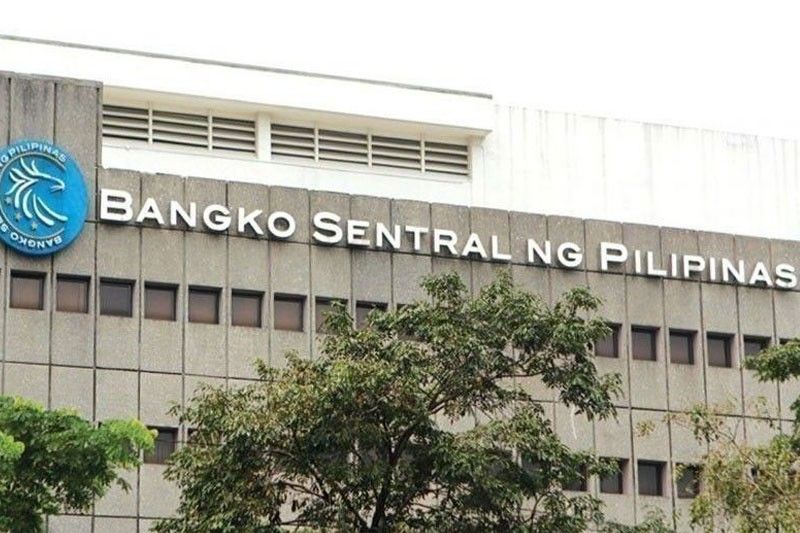Current account deficit soars to record high $17.8 billion in 2022

MANILA, Philippines — The country’s current account (CA) deficit tripled to an all-time high of $17.8 billion in 2022 from only $5.9 billion a year ago due largely to the ballooning merchandise trade gap, according to the Bangko Sentral ng Pilipinas (BSP).
In an online press conference, BSP senior director Redentor Paolo Alegre Jr. said the shortfall was equivalent to 4.4 percent of gross domestic product last year from 1.5 percent of GDP in 2021.
“The higher CA deficit reflects not only increased domestic activity but also higher net import volumes and prices,” Alegre said.
The CA consists of transactions in goods, services, primary income and secondary income. The CA measures the net transfer of real resources between the domestic economy and the rest of the world.
A CA deficit occurs when a country spends more on imports than it receives on exports.
The shortfall last year was lower than the $20.5 billion (5.1 percent of GDP) projected by the BSP.
“The higher current account deficit emanated from the widening merchandise trade gap, which was partly mitigated by the expansion in net receipts in the primary income, trade in services, and secondary income accounts,” Alegre said.
Data showed the country’s trade deficit ballooned by 31.4 percent to $69.4 billion last year from $52.8 billion in 2021 as exports rose by only 5.9 percent to $57.4 billion from $54.2 billion, while imports grew at a faster rate of 18.5 percent to $126.8 billion from $107 billion.
Net receipts in the trade in services account increased by 11.3 percent to $15.6 billion from $14 billion on account largely of increased receipts of travel services.
Likewise, primary income net receipts jumped by 62.6 percent to $5.4 billion last year from $3.3 billion in 2021 due to higher interest income receipts on direct investments, other investments, and reserve assets.
Alegre said secondary income net receipts also registered a 3.5-percent growth to $30.5 billion from $29.5 billion on the back of sustained remittance inflows from non-resident overseas Filipino workers.
According to Alegre, the financial account almost doubled to $12.6 billion from $6.4 billion due to the reversal of the portfolio investment account to net inflows from net outflows.
Similarly, the direct investment and other investment accounts continued to record net inflows, although lower in 2022.
For the fourth quarter alone, the country booked a CA surplus of $561 million or 0.5 percent of GDP, reversing the $3.7 billion deficit or -3.3 percent of GDP recorded in the same quarter in 2021.
This translated to a balance of payment (BOP) deficit of $7.3 billion, a reversal of the $1.3 billion surplus recorded in 2021. In the fourth quarter alone, the country’s BOP surplus dropped to $568 million from $2 billion in the same period in 2021.
“This outcome was attributed primarily to a higher current account deficit, which, in turn, resulted from the widening of the trade in goods deficit. Meanwhile, the financial account posted higher net inflows due mainly to the reversal of the portfolio investment account to net inflows. The increase in inflows, however, was muted by the drop in net inflows of direct and other investments,” Alegre said.
Dennis Lapid, officer-in-charge of the BSP’s Monetary Policy Sub-Sector, said the central bank is looking at a smaller CA and BOP deficits for the next two years.
Lapid said the BSP has lowered the projected BOP deficit to $1.6 billion or -0.4 percent of GDP from $5.4 billion or -1.3 percent of GDP for 2023 and further to $500 million or -0.1 percent of GDP for 2024 due to narrower trade gap amid moderation of both goods exports and goods imports.
Lapid also cited the higher growth forecast for service trade following the stronger-than-expected increase last year.
Likewise, the BSP also lowered the projected CA shortfall to $17.1 billion or -four percent of GDP from $19.9 billion or -4.7 percent of GDP this year and to $16.8 billion or -3.4 percent of GDP next year.
The country’s gross international reserves level is expected to rise to $100 billion in 2023 and to $102 billion in 2024 from $96.1 billion in 2022.
- Latest
- Trending


























